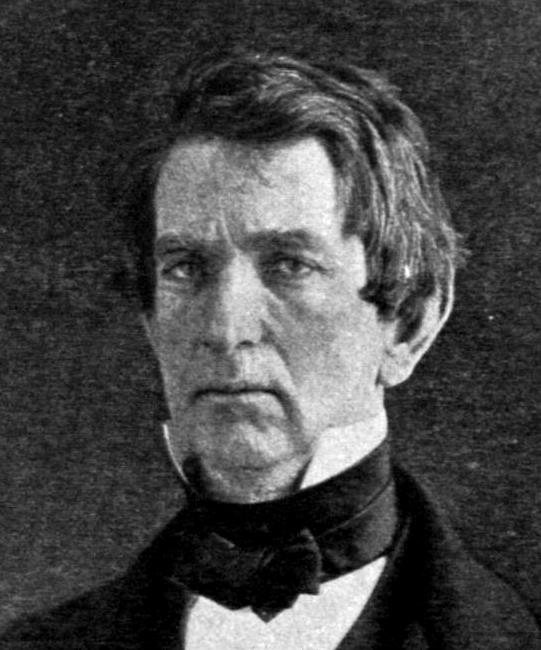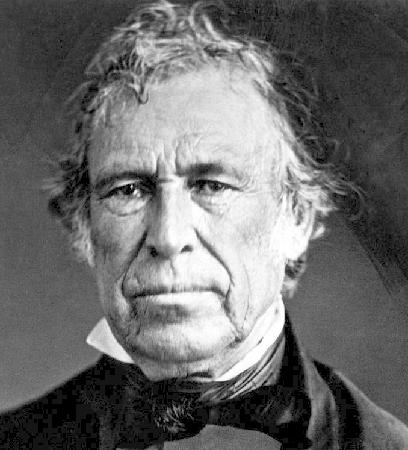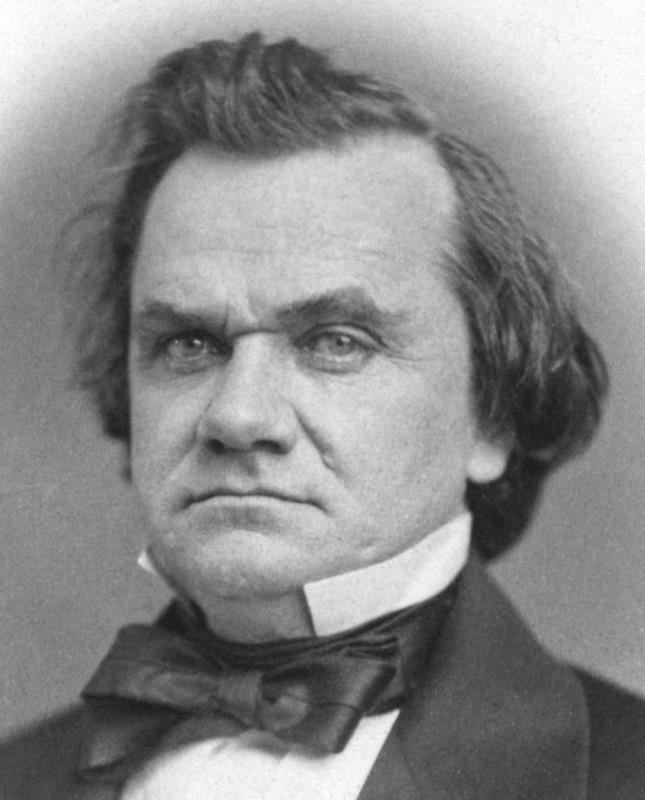7. EXPANSION ... AND DIVISION

AMERICA AT MID-CENTURY
CONTENTS
 The widening social-cultural gap The widening social-cultural gap
between the North and the South
 The North The North
 The South The South
 The Compromise of 1850 The Compromise of 1850
 Glimpses of mid-century life in America Glimpses of mid-century life in America
The textual material on this webpage is drawn directly from my work
America – The Covenant Nation © 2021, Volume One, pages 174-191.
THE WIDENING SOCIAL-CULTURAL GAP
BETWEEN THE NORTH AND THE SOUTH
|
|
Behind the moral-legal battle in Congress, in the
press, and in the pulpit stood a stark social reality that was forcing
both North and South into ever more inflexible positions as the two
sections of the country faced each other. A big part of the problem was
of course the slavery issue. But there were other issues that were
pushing the two sections of the country further and further apart –
also in part related to the slavery issue but more importantly related
to the way that the social-cultural dynamics of the two regions (with
the young West beginning to form a third part of the social-cultural
distinction) were rapidly unfolding. Both key sections of the country
were heading down very different socio-economic paths. This would only
add to the inability of the two main sections of the country to
understand or even just work with each other.
|
|
The North was prospering in a way that the South,
despite all its romantic ideas of the elegance of Southern plantation
life, could not match in terms of economic achievement. An observer of
life in the North would have been quick to note all the infrastructure
recently completed or under construction in the North: roads, canals
and railroads. True, these were also developing in the South, but at a
much slower rate than in the North. For each mile of track laid out for
railroads in the South, three miles were being constructed in the
North. And even at that, the Northern lines tended to run East and West
linking the industrial East closely with the expanding Western
frontier. Comparatively few of the roads ran north and south to link
more closely the Northern half of the country with the South.
The coastal cities of the North (Boston,
New York, Philadelphia and even Baltimore) were bustling with new life,
much of it from European immigrants – who knew of the lack of economic
opportunity in the American South and thus headed from Europe to
America's Northern coastal cities.
Much of this new life coming to the North
was chaotic, fueled by a mass of Irish coming in from Ireland to escape
the horrible 1840s potato famine which was devastating their country.
The Irish came to all of the major cities of the North (but also the
rather Catholic New Orleans in the South), disrupting the calm
composure of White Anglo-Saxon Protestant (WASP) America with their
Irish Catholicism and defiant Irish attitudes (they disliked the Anglo
world intensely for the highhanded ways the English had dealt with the
Irish crisis). Under the impetus of this Irish invasion, New York City,
for instance, became a very vibrant but also a rough place in which to
live and do business, with its tough neighborhoods, its Irish gangs,
and its corrupt political wheeling and dealing.
To the Irish, as would also be the case
for the Southern Italians and Sicilians who would flock to the country
early in the next century, social justice or law had little to do with
abstract Constitutional principles and political offices developed in
the long English tradition of both England and America. Instead, they
saw justice as vested in local urban bosses whose job in government was
to use the public treasury to take care of their own people. This Irish
paternalism was something the WASPs called corruption, but something
the Irish instead looked upon as being simply what any person had the
right to expect from government.
Further West into the heartland of the
American North were a large number of prosperous towns and cities –
large and small – and a multitude of small and well-kept farms dotting
the Northern landscape, from upstate New York and Pennsylvania in the
East to the fields of Wisconsin, Minnesota, Iowa and Kansas in the
West. All of this seemed to evidence solid success, even if only on a
small scale. There was a sense of inventiveness, of activity, of
progress, of confidence, of accomplishment, energizing the average
Northerner, who looked with pride on his or her work in the home, in
the field, in the shop.
Here too immigrants added to this picture
of vitality, notably the Germans and Scandinavians, who however blended
into the American Midwestern landscape more readily than did the Irish
in the American urban East. These northern Europeans were a more
communal group, especially the Mennonites and the Amish among them,
with a communal work ethic in many ways even more rigorous than the
highly individualistic Yankee work ethic of the Anglo North. Very
obvious material success followed their efforts, adding considerably to
the picture of rural prosperity in the North.
With the opening of the West all the way
to California, the Northern pattern tended to be the one that reached
into the new western territories. There were slaves that accompanied
some of the White newcomers to the West, though they constituted only a
small part of the population that crowded West to lay claim to the new
land. Slavery was not very useful in terms of the types of challenges
these newcomers faced in the new West. Indeed, frontiersmen were very
much the same individualists as the American Northerners, depending on
their own talents to survive and prosper in a highly competitive world.
|
The South could easily sense that the social
dynamics of a rapidly growing America were not going its way. A mood of
defensiveness was settling in on the South, still proud of its own
distinct cultural traditions – and the peculiar institution of slavery
that Southerners understood as constituting the foundation of it all.
The more the North pressed them on this matter of slavery the more
defensive they became in asserting the correctness of Southern social
values.
But sadly, despite all the romantic
swooning about the aristocratic plantation life in the rural South, the
material reality was not quite so elegant. To be sure there were
endless rounds of social visits (in the style of the British
aristocracy that Southerners attempted to duplicate), fancy balls, fox
hunts, etc. to occupy the privileged members of the plantation class.
But behind this pleasant facade stood a troubled reality. All of this
style stood on very shaky economic ground.
Cotton was king in the South, so much so
that for a long time there had been little interest in the production
of anything else. The amount of cotton that was produced was truly
vast, which meant that the price per bale produced would remain
competitively low. And it would reach an even lower low when cotton
production from India began to hit the world market. The plantations,
despite all the flow of cotton from their vast fields, were stretched
greatly to make an adequate profit able to sustain this luxurious lifestyle.
Urban life of course existed in the
South, but not generally of the bustling industrial variety found in
the North. Urban life was largely an extension of the all-prevailing
cotton economy. Towns such as Richmond, Columbus and Atlanta existed
mostly to collect and market the cotton of the rural areas immediately
around them (plus buy and sell slaves as an accompanying activity). On
the Atlantic and Gulf coasts cities such as Baltimore, Charleston,
Savannah, Mobile and New Orleans1 served as points of departure in the shipment of cotton to both British and New England textile mills.
Beyond cotton, the South was slow in its
uptake of the new industrial revolution. Steel was manufactured in the
South as well as the new tools and equipment to aid the economy of the
Cotton South, but not at the rate that it was being produced in the
North. Nonetheless, despite the smaller scale of the industrial
revolution in the South, rather substantial profits were to be had by
those who ventured into the competitive world of industry. Yet, the
status and prestige that Southerners sought was not assigned by
Southern culture to the world of capitalism. It belonged largely to the
romanticized world of the rural plantation. This was what truly slowed
the South in its economic development, at least in comparison to the
rapid industrial growth of the North.
Worse, no industrial invention had
provided an alternative to the hard reality that cotton was still
picked by hand. Cotton picking or chopping was a painful
finger-bleeding and exhausting back-breaking labor as well as often a
spirit- breaking activity, especially when accompanied by the whip of a
White overseer who had the responsibility of making sure that the Black
slaves under his charge met high-reaching production quotas.
Cotton farming did not make for much
happiness, not just for the slave but also for the White farmer who
could not afford slaves – as indeed the vast majority could not. The
Southern dirt farmer was by economic reality reduced to a material
standard of living hardly better than that of the slave, often
occupying shacks no more comfortable than the ones the slaves occupied
on the plantations. Of course the White farmer was free and the Black
slave was not. And on that difference the poor-White farmer staked his
entire self-image, to ensure that at least that small achievement would
not be taken from him by freeing the slaves and thus putting him on a
par with them. To protect that slim social distinction, he would be
willing to fight fiercely. Beyond that he dreamed the Cinderella dream
that he someday might find himself elevated to the social level of the
plantation elite whom he admired greatly (when he was not resenting
them). The dream sustained him somehow, even though there was virtually
no likelihood of it ever coming true.
As for the slaves, the tragedy of the
lives of the masses of these captive workers was almost beyond
endurance. It was not just that they were worked to exhaustion daily
but that they had no sense of the future ever holding anything positive
for them. In fact the future held the agonizing possibility of their
much-loved spouses or children being taken from them by a cash-strapped
owner who needed to sell them to pay off mounting debts. They were
treated like commodities, similar to cattle, and even bred like cattle
in order to build up their numbers as an economic asset, averaging in
value at that time around $1000 apiece if they were young, strong and
of a fertile age. And of course there were the young masters who could
not keep their hands off of attractive female slaves, humiliating both
slaves and White family at home with their sexual adventures, which no
one dared talk about even though it was widely practiced.
And connecting the slave and the slave
owner besides the whip was the regime of fear produced by the whip.
Although to ease its conscience White society attempted to dehumanize
the African slave, there was no way that the Whites could get past the
understanding of exactly how the slaves must truly feel about their
White masters. That link of fear was based heavily on the constant
concern about the possibility of a slave rebellion (such as the
successful slave rebellion in Haiti or the failed one of Nat Turner in
Virginia in 1831). The White South did not know what to do. To keep the
slaves in submission they would have to be unflinching in their harsh
discipline, which they knew darkened ever deeper the slave heart. Yet
to try to win slave hearts was to have to release that grip, which
could then explode the very social foundations of the South.2
1New
Orleans was actually the third largest city in America at the time.
Being the primary port of the huge Mississippi River watershed region,
its economy was much broader, of course, than just the cotton trade.
2White
Southerners were keenly aware of what had occurred in the French colony
of Haiti in which in 1791 the African slaves successfully rose up
against their French masters, defeated an effort in 1803 by Napoleon's
military to bring the slaves back into submission and ultimately in
1804 butchered thousands of French, forcing the French to finally
acknowledge the obvious: Haiti was free of White oppression.
| 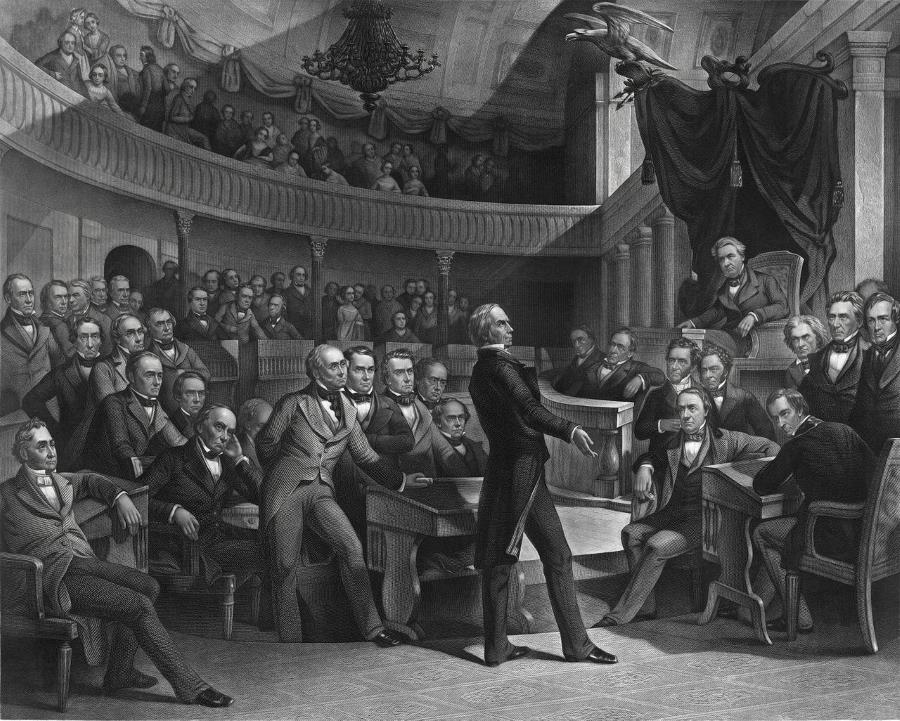
Henry Clay offering his 1850 compromise on the
slavery / statehood issue
|
The American acquisition of the Western
territories resulting from the Mexican-American War had sadly and even
tragically merely presented another round in the North-South contention
over slavery and its extension westward. Promoted strongly by former
General and now President Zachary Taylor was the idea that California,
New Mexico and Utah should be brought directly into union with the
U.S., and not go through the stage of first being territories prior to
statehood. Furthermore all three future states had expressed the
intention of being brought into the Union as Free-Soil states. This was
not going to please the South.
At the same time, Southerners were
already talking about disunion. In late 1849 Mississippi called for
Southern representatives to meet the following year in Nashville. The
purpose of this meeting though unstated was obvious. They were going to
be gathering to discuss this very possibility. Needless to say, all
this created quite a stir in Washington.
When the candidacy of California was put
forward for statehood at the very end of 1849 tempers in Congress
flared. California was going to be admitted as a free state, ending the
tradition of maintaining a balance in the number of slave and free
states. The speeches for and against grew hotter as they took on very
biting moral accusations and moral justifications concerning the
central issue of slavery. One vote followed another as the two sides
deadlocked over the issue.
Once again the Great Compromiser Henry Clay (but now also a very weak old man) stepped forward in the Senate3
at the end of January (1850) to offer a set of proposals that he hoped
would smooth feelings on both sides, and ease the way for California to
achieve full statehood. The bill authorized the admission of California
to the Union as a Free-Soil state; it set the Western boundaries of
Texas, thus ending the contention Texas had with New Mexico; it
designated both Utah and New Mexico as territories, with each
possessing the right to determine how they would eventually enter the
Union, as free or slave states; it called for the end of slave sales
within the Washington, D.C. capital (though not the end of slavery
itself in the nation's capital); it required Congress to drop any claim
of authority to regulate the interstate trade in slaves; and it
required the North to return escaped slaves to their owners in the
South, a measure that was designed to calm the fears of the South about
Northern Abolitionist ambitions.
As compromises typically fare, it pleased
the moderates of both the North and the South but also succeeding in
angering the extreme wings of the Abolitionist Northerners and
increasingly independence-minded Southerners. Particularly upset were
the Northern Abolitionists to whom the idea of the forced return of
slaves that had escaped to the North was an abominable idea. They would
have none of it, even if it meant defying the nation's laws.
But not everyone in the South was
appeased by this compromise either. At the beginning of March, Calhoun,
too weak to deliver his speech himself to the Senate, had someone read
for him the biting accusations about the rising tyranny of the North,
and his call for an amendment to the Constitution that would give the
nation a dual presidency and the right of each state to veto any act of
Congress. Also, Southerners should be able to go anywhere in the Union
without the fear of having their property confiscated. Slavery must be
protected throughout the Union. Anything less than that would be
answered with the secession of the Southern states.
The speech shocked everyone, yet had the
effect of emphasizing even more the importance of compromise in order
to save the Union from dissolution.4
Several days later it was the turn of the
third elderly member of the Great Triumvirate, Daniel Webster, to
address the issue in the Senate. In his three-hour speech, he recalled
the history of the slavery issue as it had taken on ever greater
importance to the nation, the efforts to bring the issue to compromise,
and the overriding importance of maintaining the Union. He also
projected that any move to disunion would throw America into chaos, and
ultimately murderous conflict. With this he was stating what was
becoming increasingly obvious to all, that if America continued to
behave as it had been recently, there would be no escaping some
horribly violent outcome. The nation had to come together.
Then four days after Webster's speech, it
was the turn of a rising star within the Senate, William Seward of New
York, an Abolitionist Whig, to be heard. He put forward the claim that
there was a higher law than even the Constitution that he answered to,
the Law of God. That higher law would never permit him to return an
escaped slave back into the arms of immoral, illegal servitude.
Southerners were furious. Even Northerners were stunned. But Seward had
laid the seeds of an argument that would gather force among the
Northerners.
A Congressional committee was set up to
consider Clay's proposals and finally in May these proposals were
brought before Congress in the form of an omnibus5 bill: all measures to be voted up or down jointly in a single vote.
Meanwhile tensions were growing between
(slavery) Texas and (free) New Mexico, as Texas claimed that the
eastern half of what was being designated as New Mexico territory was
in fact an integral part of Texas. Texas was willing to enforce that
claim by military action if necessary.
But President Taylor weighed in against
Texas and demanded immediate accession of New Mexico as a new state,
and as an old soldier was willing also to enforce his viewpoint by
military action if necessary. Southerners then were quick to join Texas
in their outrage over this move by the president because the accession
of New Mexico would mean one more free state being added to the Union.
War clouds began to gather in the West.
Then in the midst of the furor, President
Taylor got sick attending a long, hot 4th of July ceremony in the
capital, worsened (by the help of doctors who bled him extensively and
pumped him with narcotics), and died five days later. The nation was
stunned.6
But this automatically elevated Vice
President Millard Fillmore to the presidency. And he was willing to
take a more centrist position, consulting both Clay and Webster, both
well known as willing to compromise on this matter.
But at this point it was time for yet
another key figure to take center-stage: Illinois Democrat Senator
Stephen A. Douglas. Though Douglas was a major slave owner (thanks to
his wife's inheritance of a 2500-acre plantation in Mississippi, which
he rarely visited but which was for him a constant source of revenue)
he was a Democratic Party moderate on the slavery issue. He proposed
that the various portions of the omnibus bill be broken out into their
different parts and be considered separately. This lowered the tension
about the all-or-nothing character of the legislation.
Also with the radical pro-slavery Calhoun
gone from the scene and with the death of the strongly Free-Soil Taylor
also no longer in the picture, tensions eased. Talk of war subsided.
Now a new mood opened the opportunity for compromise.
An exhausted Clay called on Stephen Douglas to run his measure through
the Senate again. This time the Compromise made its way successfully
through Congress in September in the form of a number of pieces of
legislation. Texas was willing to give up its claim on New Mexico (and
adjust its territorial boundaries elsewhere as well) with the
assumption of $10 million in Texas debt by the federal government. And
the part that the Abolitionists hated so fiercely, the promise of the
North to return all escaped slaves to the South (coupled with massive
fines slapped on anyone aiding and abetting any escape of a slave), was
finally passed as the Fugitive Slave Act.
Now the thought arose that the slavery
issue had been resolved once and for all. The Union was saved. But
Southerners remained skeptical. To them, whether the Union held or not
depended on how faithfully the North enforced the Fugitive Slave Act.
They were soon to find out.
3Of
course both houses of Congress were debating the same issue, but the
nation's eyes tended to be turned more to the Senate where debate was
viewed as having more of a strategic nature, especially when it
involved an address to the Senate of one or another of the Great
Triumvirate of Senators Henry Clay, Daniel Webster and John C. Calhoun.
4John
C. Calhoun died some four weeks later. With Calhoun dead, the Nashville
conference got put aside, and the secessionist mood in the South
subsided, for a while anyway.
5This
was a term that Taylor came up with, unhappy at how all these measures
had been thrown together, like being put in an omnibus, a large city
carriage that anyone could ride for a fee. The term stuck and is now
used regularly in Congressional legislation.
6Rumors
persist to this day that Taylor may have been poisoned. In 1991 tests
were made that said no, but even the tests have been contested.
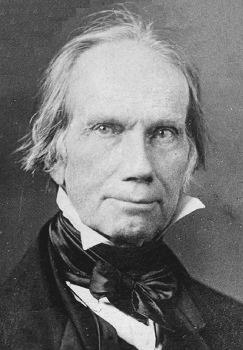
| With the idea of
bringing California, New Mexico and Utah into the Union as "Free
States," things heated up, leading Henry Clay to offer a "compromise"
... admitting those states but enforcing the return of escaped slaves back
to their Southern masters.
|
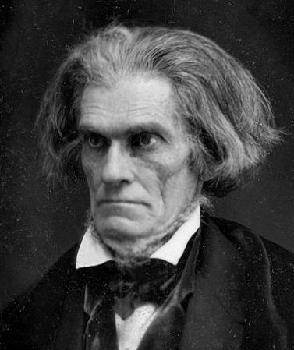
A
very sickly Calhoun had a speech read in the Senate ... calling for a
change in the U.S. Constitution providing for a dual presidency... one
representing the North, one the South ... and the right of the states
to veto any act of Congress.
At this point, sectional tensions were heating up greatly.
|
| Then
Daniel Webster spoke up ... warning that sectional division would throw
the Union into deep chaos ... and ultimately bloody conflict. The
nation needed to come together.
|
Then
a young William Seward spoke up, stating that the Law of God would
never permit him to return anyone who had escaped slavery back into
such immoral servitude.
Meanwhile Texas (Slave) and
its neighbor New Mexico (Free) not only were engaged in a border
dispute ... but New Mexico's admission to the Union would strengthen
the Northern or Free position in the Senate.
|
| Then in the
midst of the furor, President Zachary Taylor got sick attending a long, hot 4th
of July ceremony in the capital, worsened, and died five days
later. The nation was stunned.
|
At this point the young Senator Stephen A. Douglas stepped forward to suggest a number of compromises.
Also,
with the death of both Calhoun (strongly pro-slavery) and Taylor
(strongly anti-slavery) tensions seem to subside. The hope was
that America could now get past the issue.
|
|

Territorial claims prior to the
Compromise of 1850
Wikipedia – "Compromise of
1850"
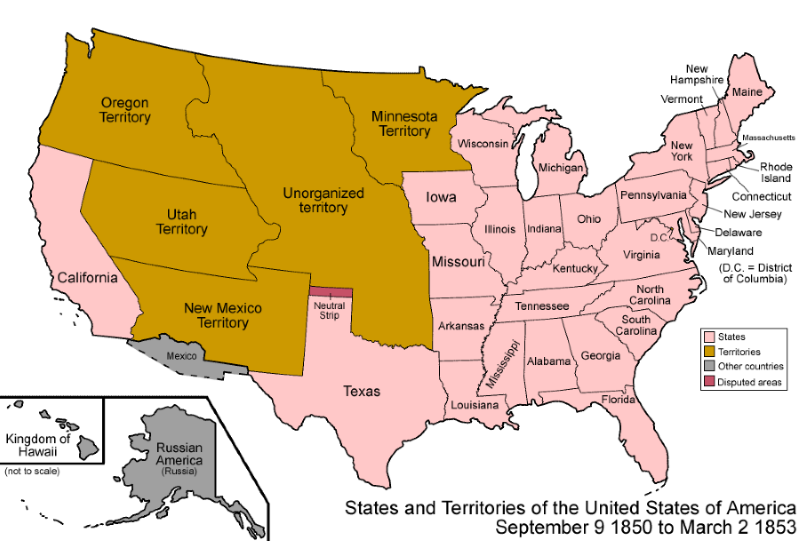
Territorial claims after the Compromise of 1850
Wikipedia – "Compromise of
1850"
GLIMPSES OF MID-CENTURY LIFE IN AMERICA |
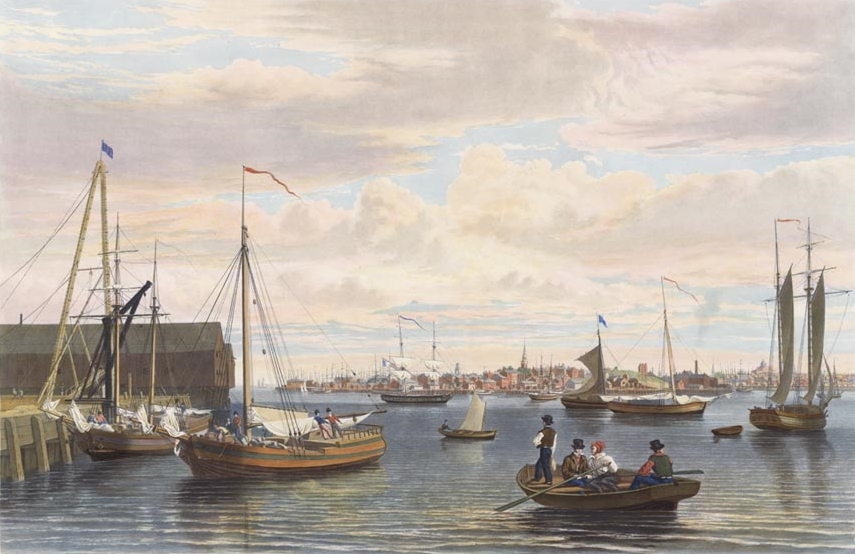
1833 – Boston Harbor – William Bennett
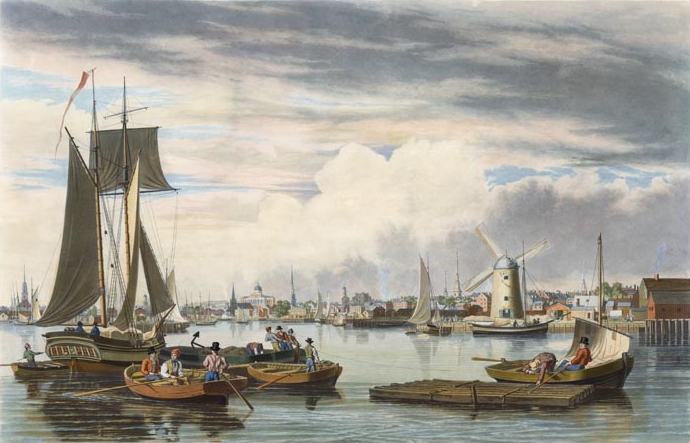
1833 – Boston Harbor – William Bennett
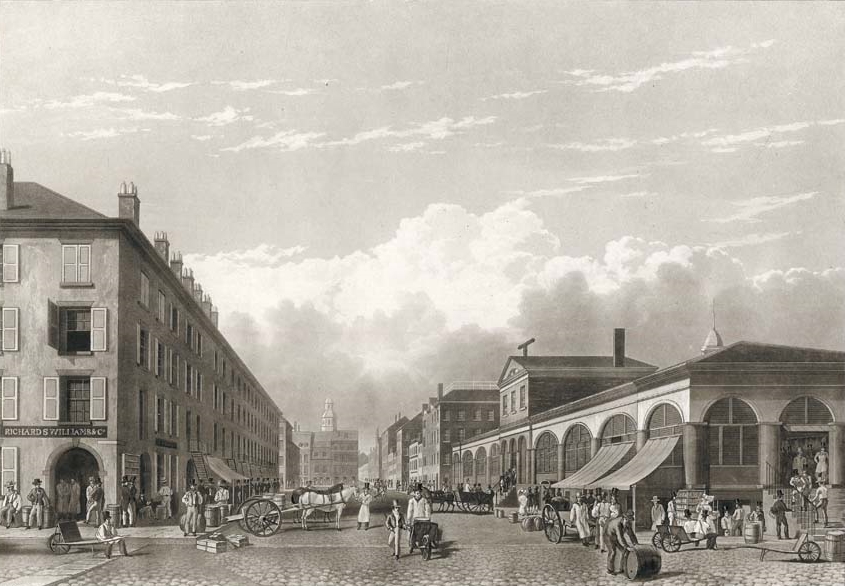
1834 – New York City – Fulton Street & Market – William Bennett
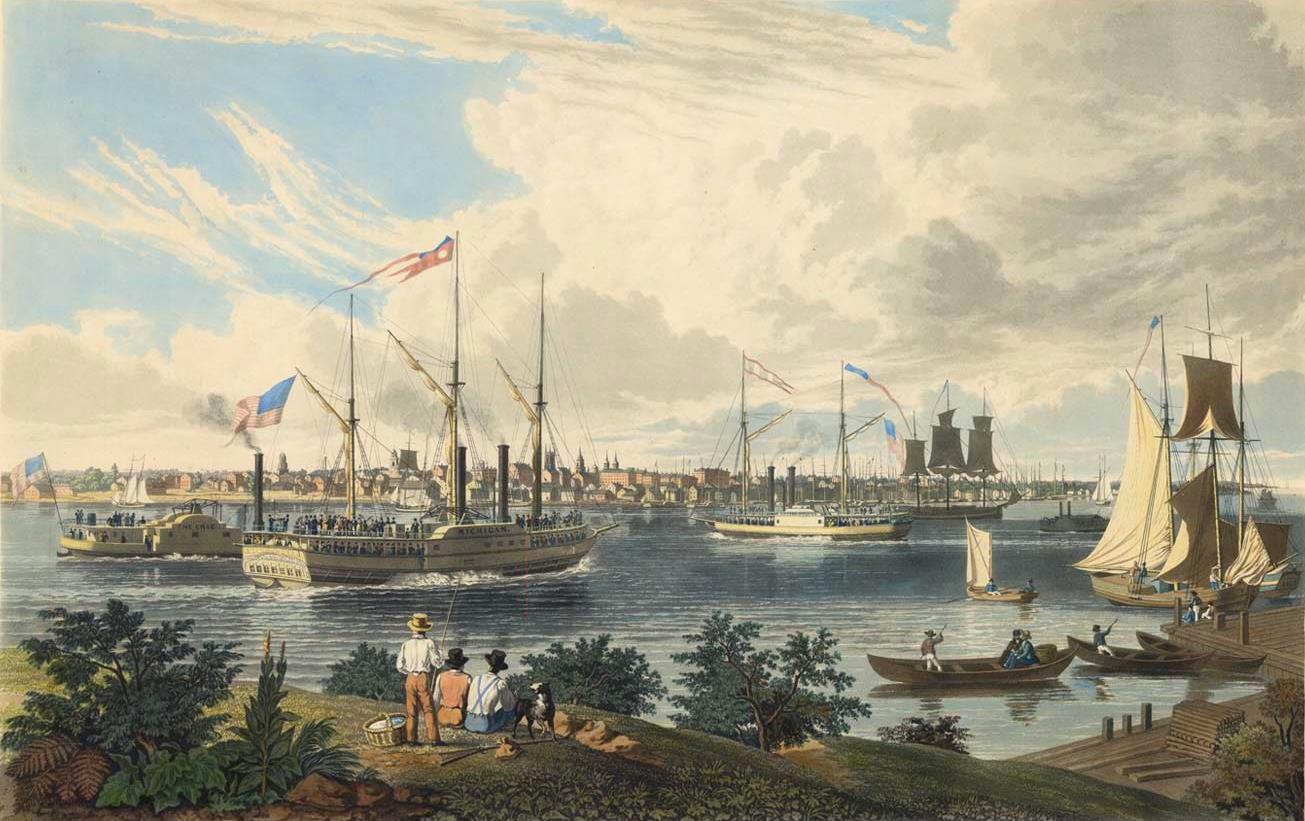
1837 – Detroit (viewed from neighboring Canada) – William Bennett
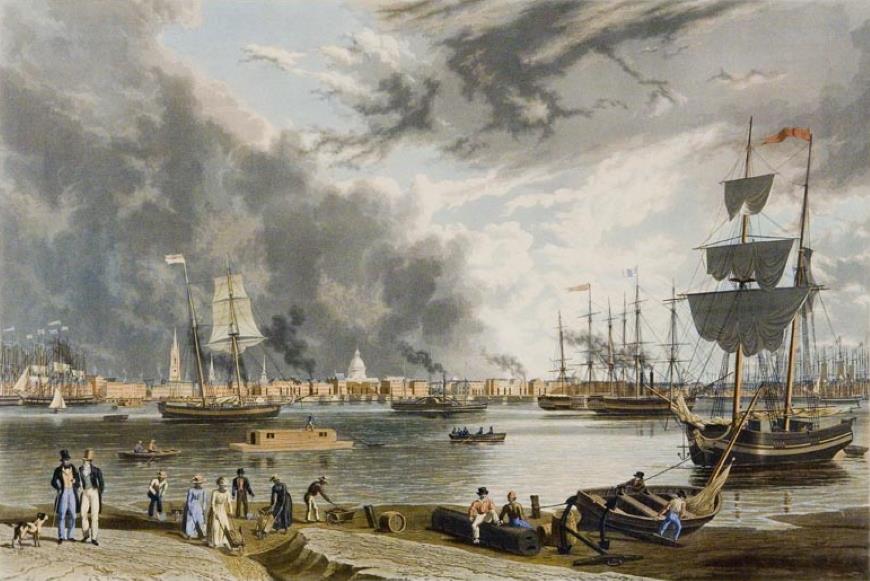
1841 – New Orleans – William Bennett

1850 – Providence, Rhode Island – The Arcade
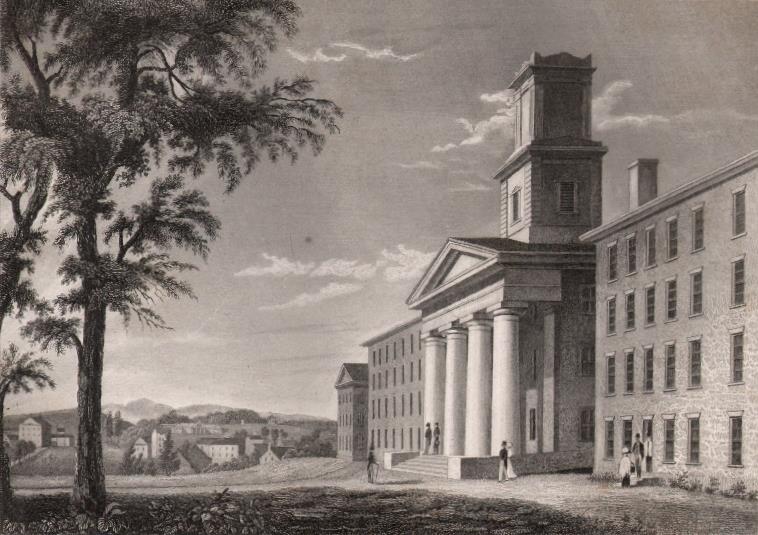
1850 – Amherst, Massachusetts – Amherst College
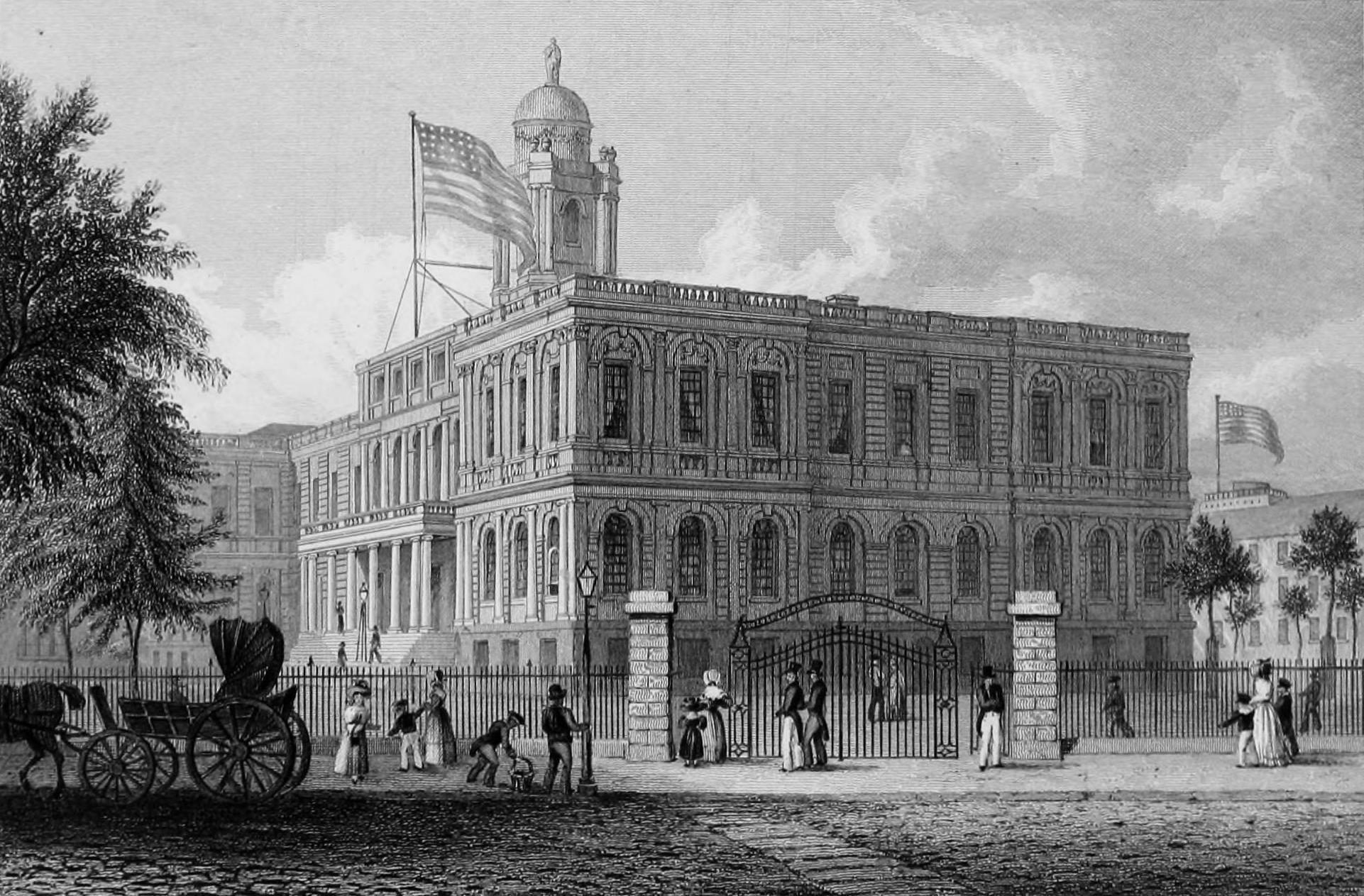
1850 – New York City Hall
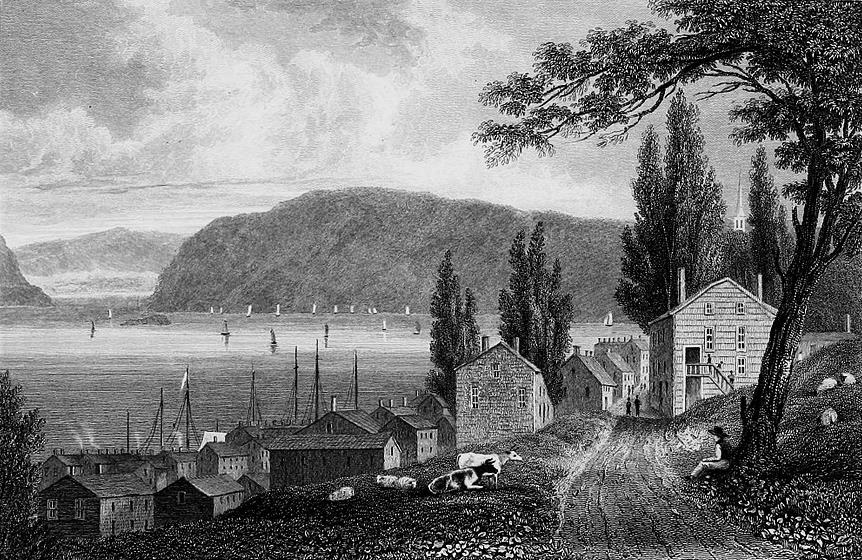
1850 – Newburgh, New York
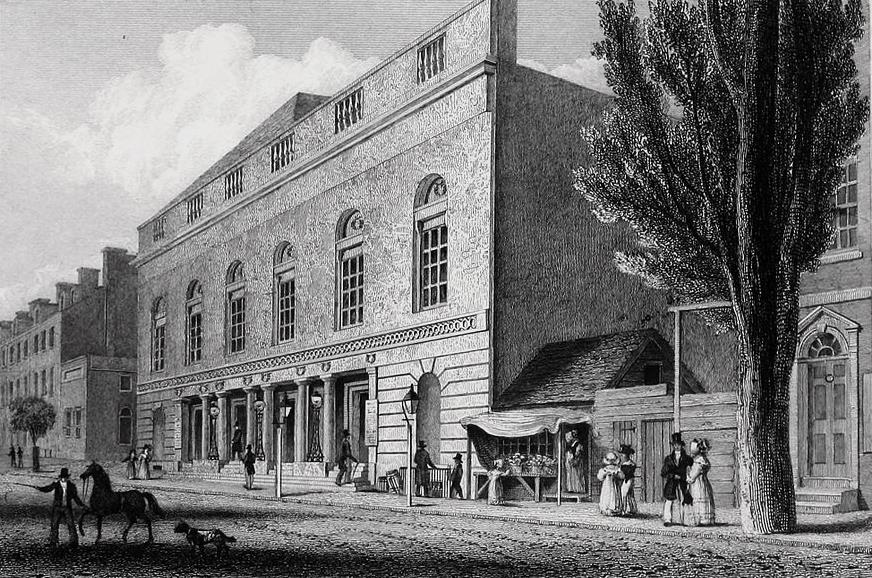
1850 – Philadelphia – The Walnut Street Theater

1850 – Philadelphia – Upper Ferry Bridge and Fair Mount Water Works
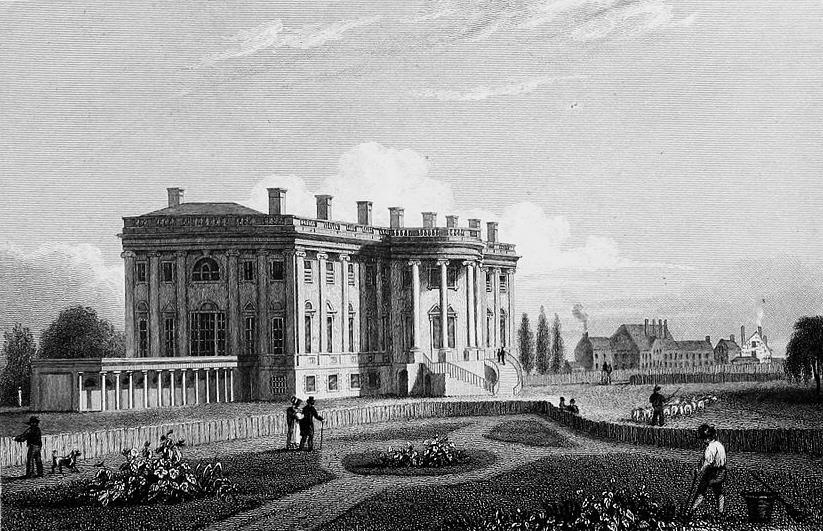
1850 – Washington, D.C. – The "President's House" (today's White House)
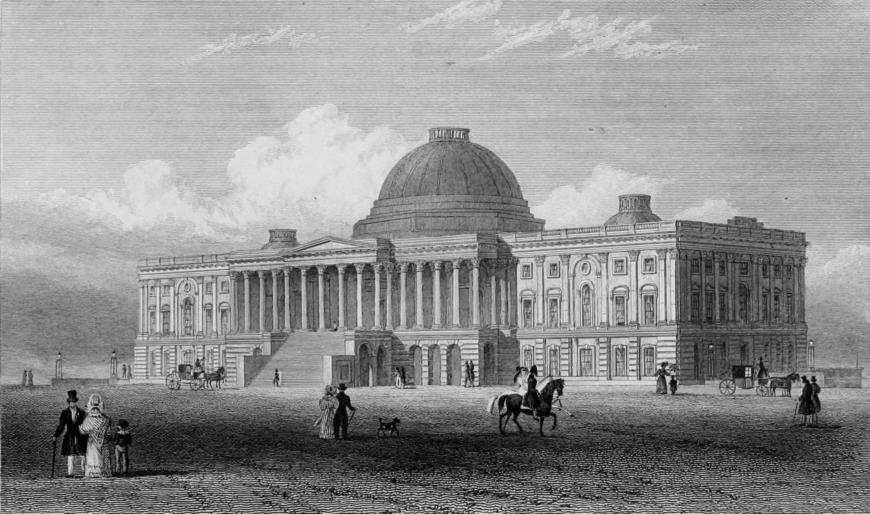
1850 – Washington, D.C. – The U.S. Capitol Building
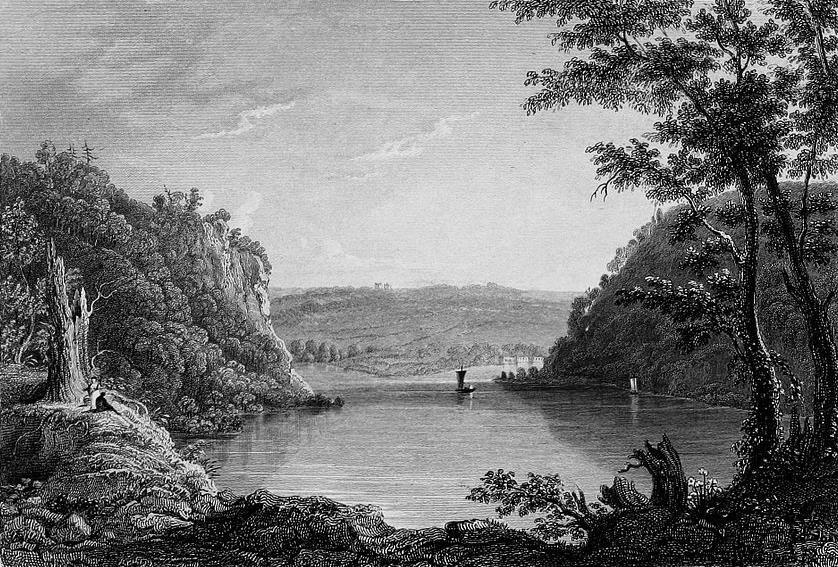
1850 – Harpers Ferry ... along the Potomac River
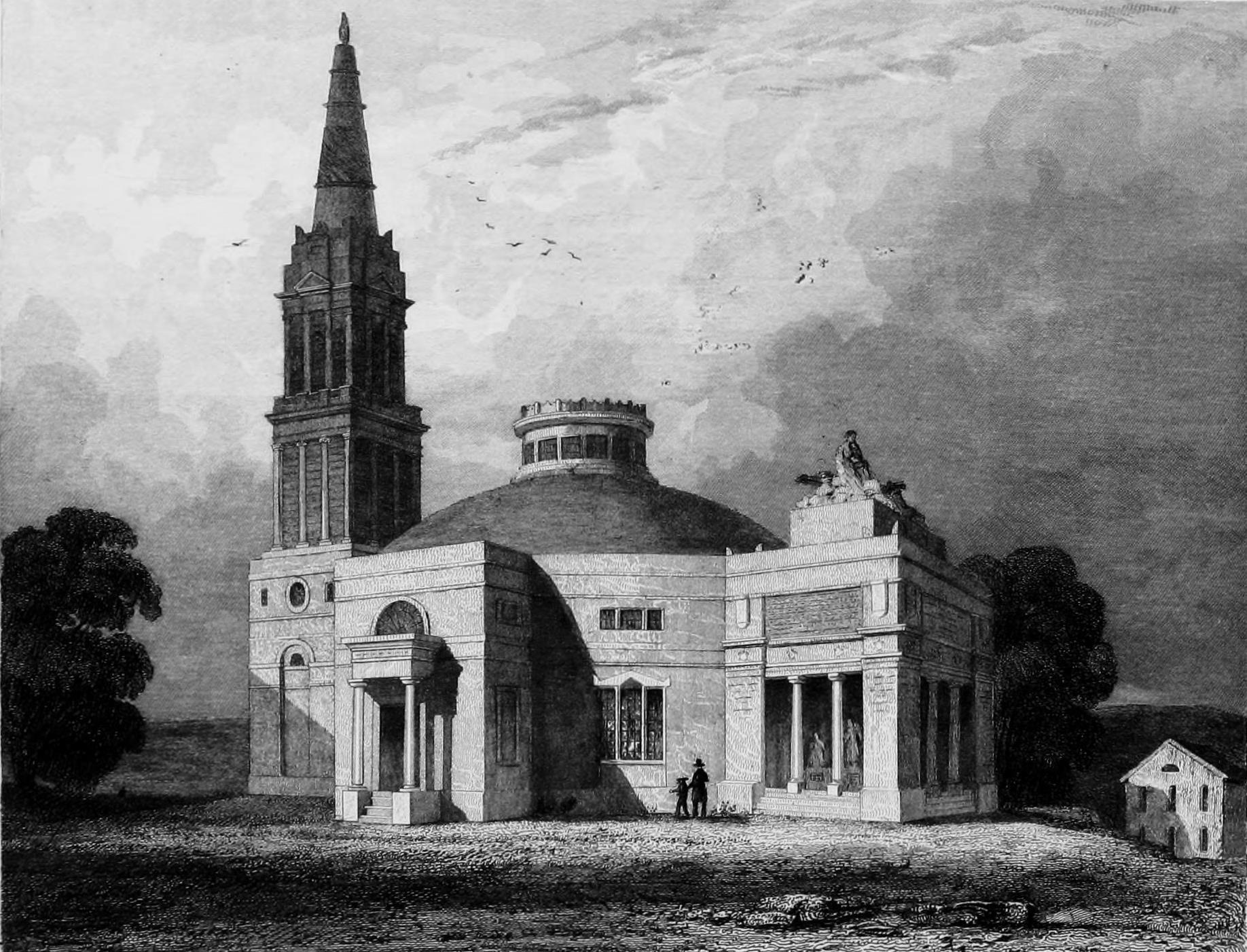
1850 – Richmond – The Episcopal Church
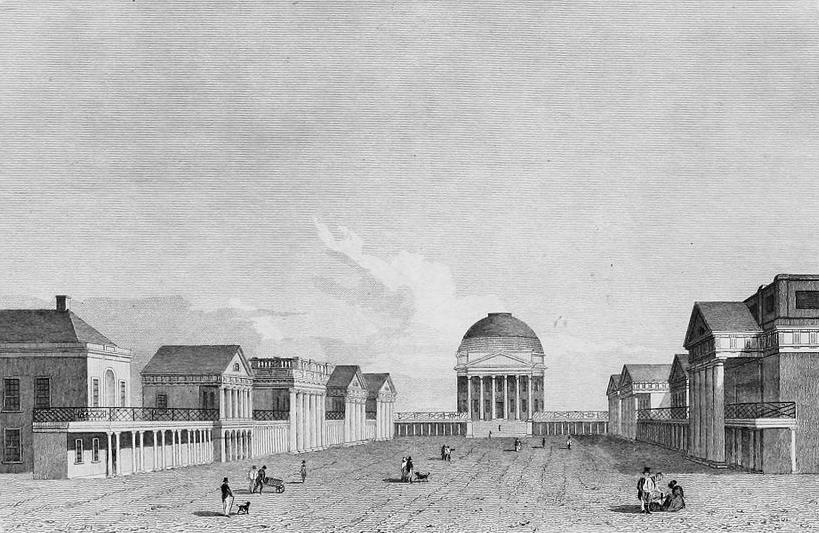
1850 – Charlottesville – The University of Virginia
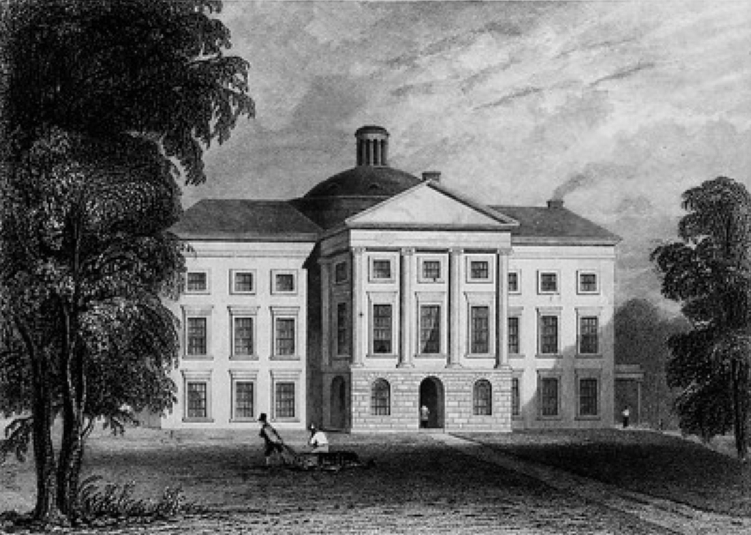
1850 – Raleigh, North Carolina – Capital building
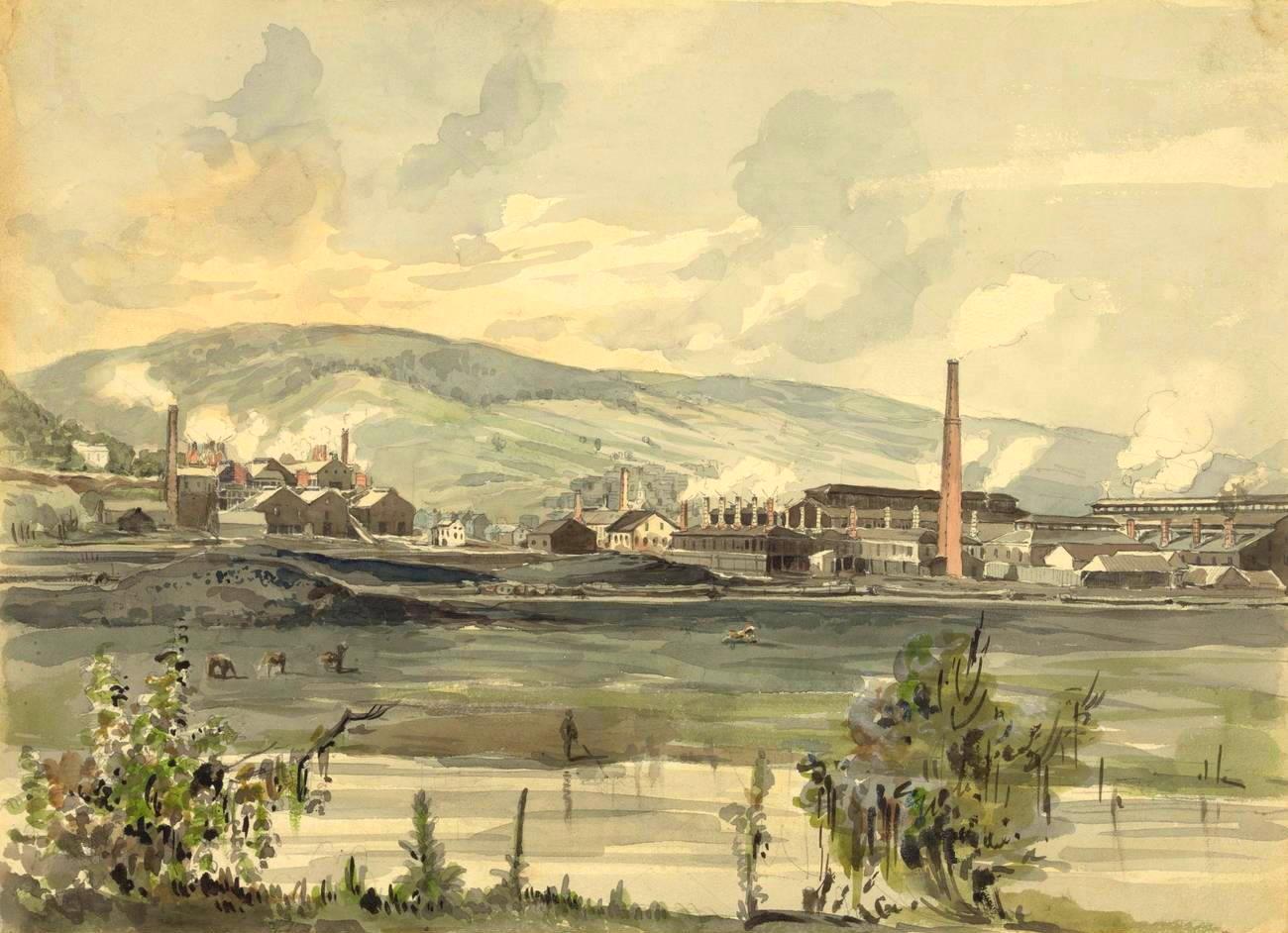
1857 – Factory on a river in Pennsylvania – James Fuller Queen
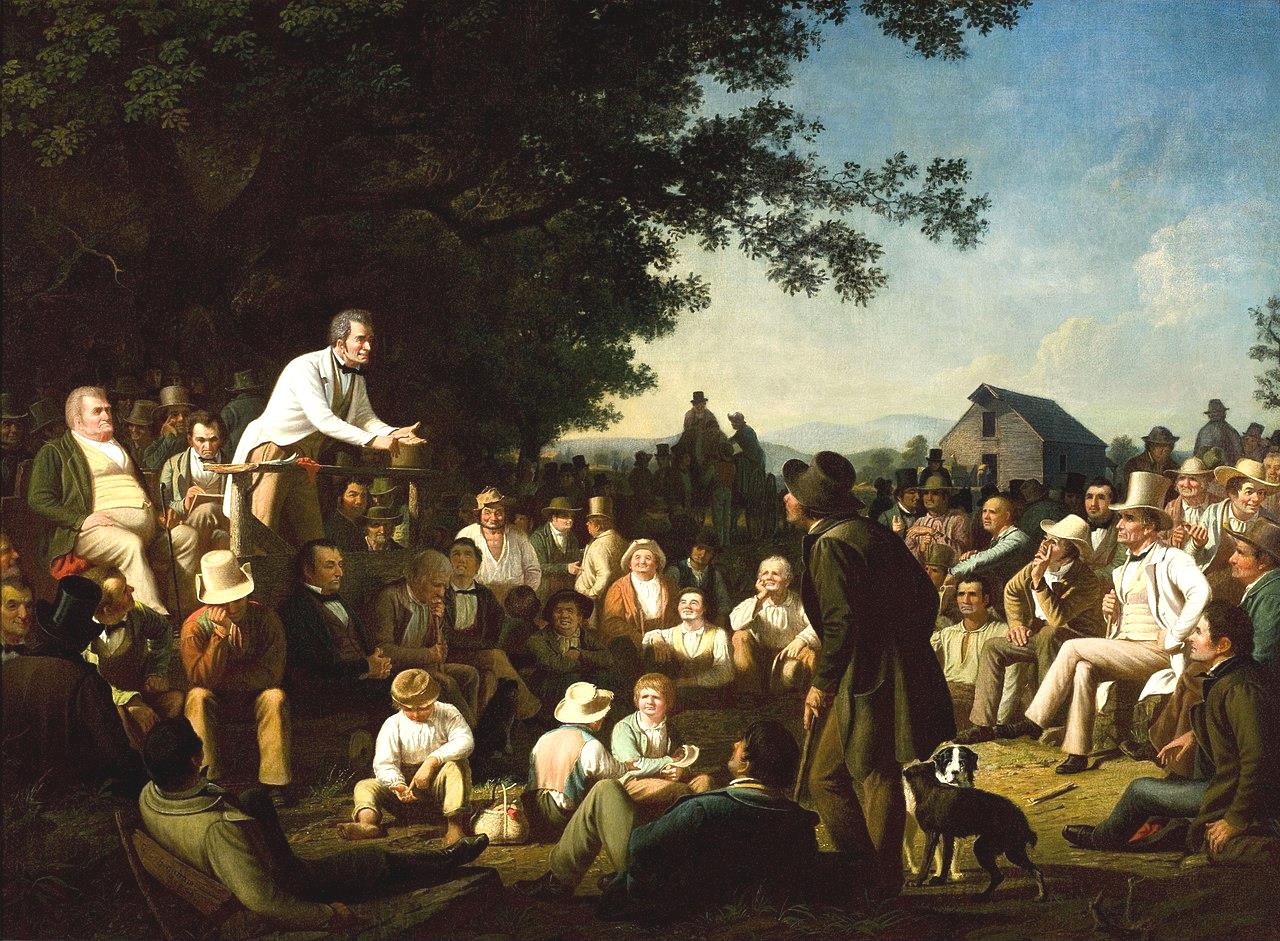
George Caleb Bingham
– Stump Speaking (1853)
oil on canvas
Saint Louis Art Museum
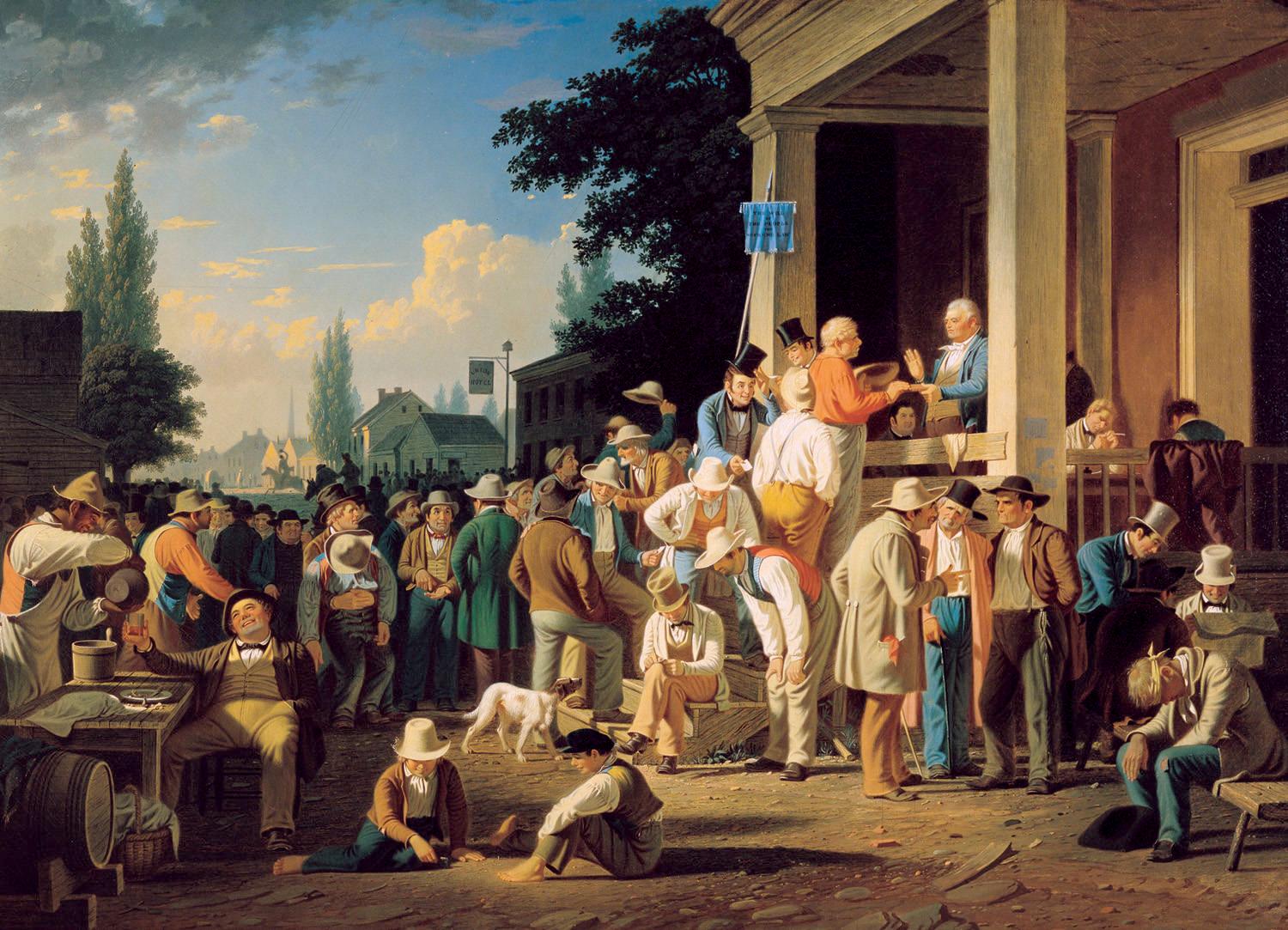
George Caleb Bingham – The County Election (1852)
oil on canvas
Saint Louis Art Museum
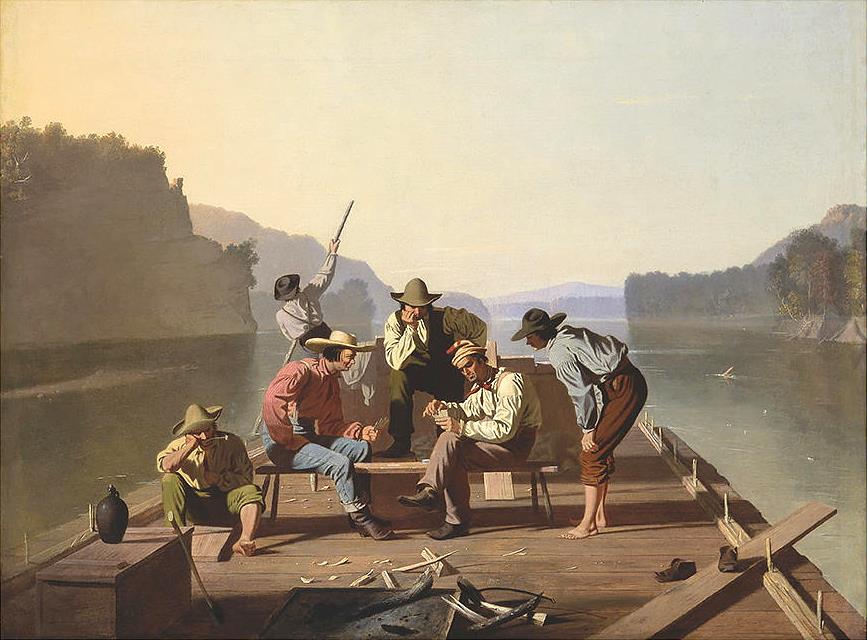
George Caleb Bingham
– The Boatmen
Saint Louis Art Museum
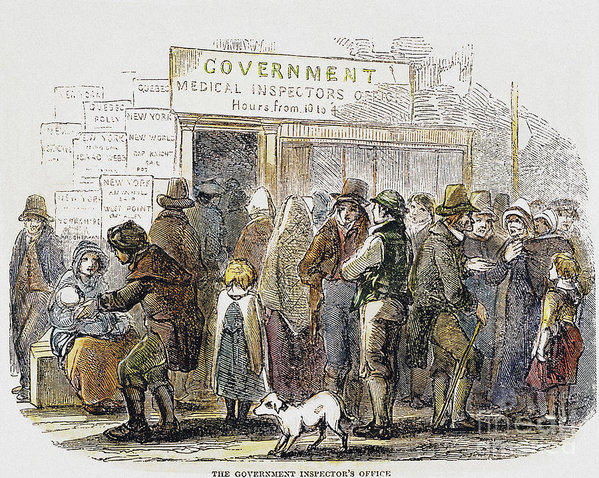
1850 – Irish Immigrants

Go on to the next section: The Steps towards War
 Miles
H. Hodges Miles
H. Hodges
| | |

 The widening social-cultural gap
The widening social-cultural gap Glimpses of mid-century life in America
Glimpses of mid-century life in America





























